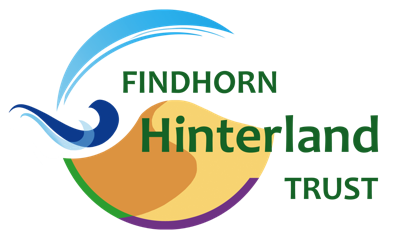Build It and They Will Come!
The story so far. The Shepherds Hut has been fundraised for, built, finished and moved into Wilkies Woodland – thank you to all who have been involved in the process. A bell tent complete with a small wood stove was also purchased and pitched by FHT last spring to accommodate Irene Canalis, a keen young Spanish lady who lived in it connecting intimately with the land until she left in the autumn. During her time as a long-term committed volunteer she had regular engagement with tasks on the land guided by Kajedo and myself, daily journaling about the experiences/insights and also frequent review sessions. She helped us start to think about how the Trust might develop this role further, possibly into a future land management apprentice programme? We were all learning with Irene and it turned out to be a very valuable experience.

FHT’s future needs: FHT is committed to looking after the land it is custodian of for at least 100+ years ahead partly due to being the burial authority for the Wilkies Wood green burial ground which requires it to look after that piece of land for 100 years after the last burial and partly to do with our work with managing different habitats which require us to plan well into the future. Over the years many local volunteers have engaged with caring for this special backyard with this work underpinned and at least equaled by our part-time skilled and knowledgeable Land Manager Kajedo Wanderer who is essential to the smooth running of this part of the charity’s work. Kajedo is dedicated to carrying on this good work but there will come a time when he may wish to take things easier which is why we need younger people learning the skills and knowledge required to eventually take up the challenge – FHT needs to be thinking about succession planning. This is also important with Draeyk van der Horn’s excellent work as a very experienced gardener in the Woodland Garden, a small demonstration plot on the edge of the community. Individuals are wonderful and essential but even more important is to have good organisational structures to take good ideas and work into the future. The long-term volunteer/apprenticeship programme we wish to establish should allow the possibility of smooth and planned transitions to take place.

What is on offer: The land the FHT manages is a very special backyard in its own right with a fascinating mosaic of different habitats and some rare species living there. It is also a vibrant part of what is now called The Park Ecovillage Findhorn, a community dedicated to co-creation with Nature and known worldwide for its Nature and heart based spirituality. For the right person it could be a very desirable place to be. Living on the land in the bell tent or Shepherd’s Hut and learning how to take care of the Earth in very practical ways from a knowledgeable team could provide an opportunity to step out of the ‘rat-race’ and give that person an extended period of simple living surrounded by trees and close to both the sea and the dynamic ecovillage community.

Putting out the call. FHT now has suitable accommodation for the right people to become committed apprentices. This could happen over the summer staying in our bell tent and working with Draeyk in the Woodland Garden and at least over a whole year to work with Kajedo and other members of the team using the Shepherds Hut for accommodation. Are you that person or do you know someone who would thrive given this possibility of developing a career or additional experience in these fields? Further details would be discussed and worked out. If you are that person do get in touch by emailing [email protected] or by phoning 07825 212816. We look forward to exploring this exciting possibility with you.

Jonathan Caddy
FHT Chair
May 2023



























































Our Wonderful Woodland Garden
The last few months have seen abundance in the garden, not just in harvest but in wildlife, be it the small beings in the pond to larger visitors; all sharing this bountiful space. In fact, so much so that we humans have had to take a beat and remember this is a shared edible landscape.
There have been numerous group visits from tours, arts programmes, permaculture organisations and many more, so the garden continues to inspire. Meanwhile the Outdoor Learning Space is increasingly being used for get-togethers, music, reading and writing and solo meditations. The new comfy bench has proved a real hit and the new glass window so wonderfully fitted by a volunteer is fantastic and provides a view onto the new wind and hanging plant garden to the rear. Thanks also to the removal of the sadly ineffective stove and burner we have more room in the space.
The new Outdoor Learning Space window
It has also been a challenging time too, with less helpers it takes more to keep the garden flourishing, so please if you say you are coming please let me know if you cannot make it. Saturdays at 9am remains the day and time I am usually there if you want to drop by on a more informal basis.
What’s on show at the moment you may ask? Well we have wild bergamot in perfusion, as well as a wonderful display of strawflowers, runner beans, sunflowers and coral fungus. So drop by soon or contact me if you wish to volunteer. I am particularly looking for a committed volunteer who can be mentored into the practices of the garden, so please contact me if interested.
Draeyk van der Horn
FHT Woodland Garden Orchestrator
15th August 2023